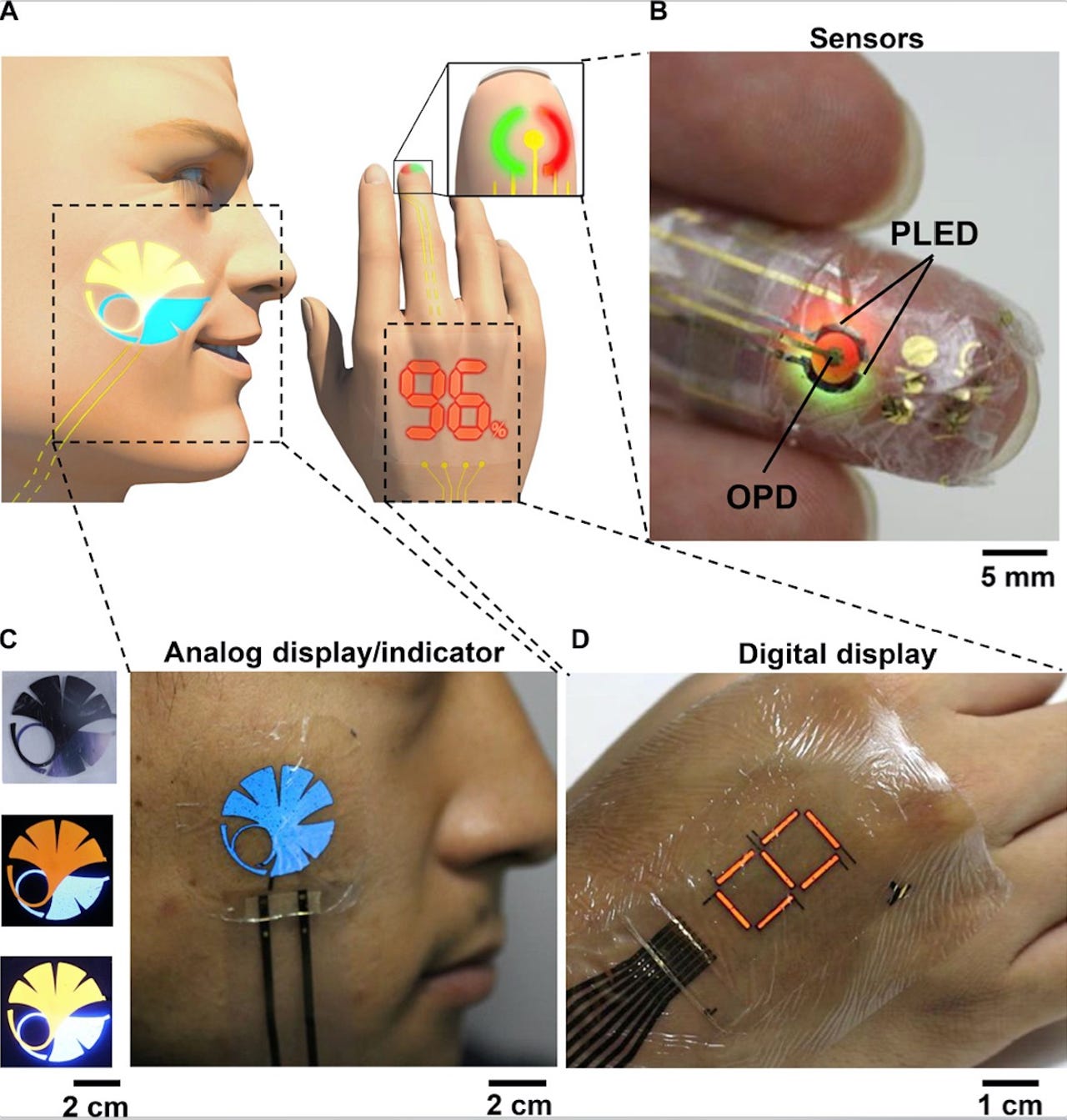Researchers develop 'e-skin' for monitoring your vital signs

An electronic "skin" which can monitor health and oxygen levels in the blood has been developed as a non-invasive way to monitor your vital signs.
Researchers from the University of Tokyo say the "e-skin," laminated on to the actual skin of a wearer, was used to accurately monitor the levels of oxygen in the blood of volunteers during testing.
The ultra-thin, flexible skin contains polymeric light-emitting diodes (PLEDs) which light up in red, green or blue depending on how oxygen levels measure up. As shown in the image below, the skin can be customised to display different data on various parts of the body.

The invention could not just be used to measure and monitor patient health in surgeries but could also be implemented in a wide range of bioengineering and next-generation medical technologies. Thin-film monitoring could be used in connection with advanced prosthetics or implemented with sensors for monitoring a range of health conditions.
The scientists said the electronic skin is an example of how wearable technology does not have to be invasive. With an overall thickness which is less than the epidermal layer of human skin, the film is not uncomfortable to wear -- which is a critical factor in making such monitoring acceptable to potential future users.
Featured
In addition, the skin could also have industrial applications, such as for monitoring the health of workers in dangerous environments.
According to the scientists' research, published in the journal Science Advances, creating the silicon skin with very low temperatures improves the flexibility and resilience of the skin, which can then be peeled off and reused.
"Improvements of the ultrathin passivation system, and hence device lifetime, seem feasible by further optimization of the deposition conditions," the team says. "Ultimately, flexible organic optical sensors may be directly laminated on organs to monitor the blood oxygen level during and after surgery."
Wearables may not have captured the hearts and minds of consumers, however, research combining wearables with health is pushing forward. In 2014, Google revealed a GoogleX project for developing contact lenses able to monitor user glucose levels.
Must-have high-end smartphones for business users
Read on: Top picks